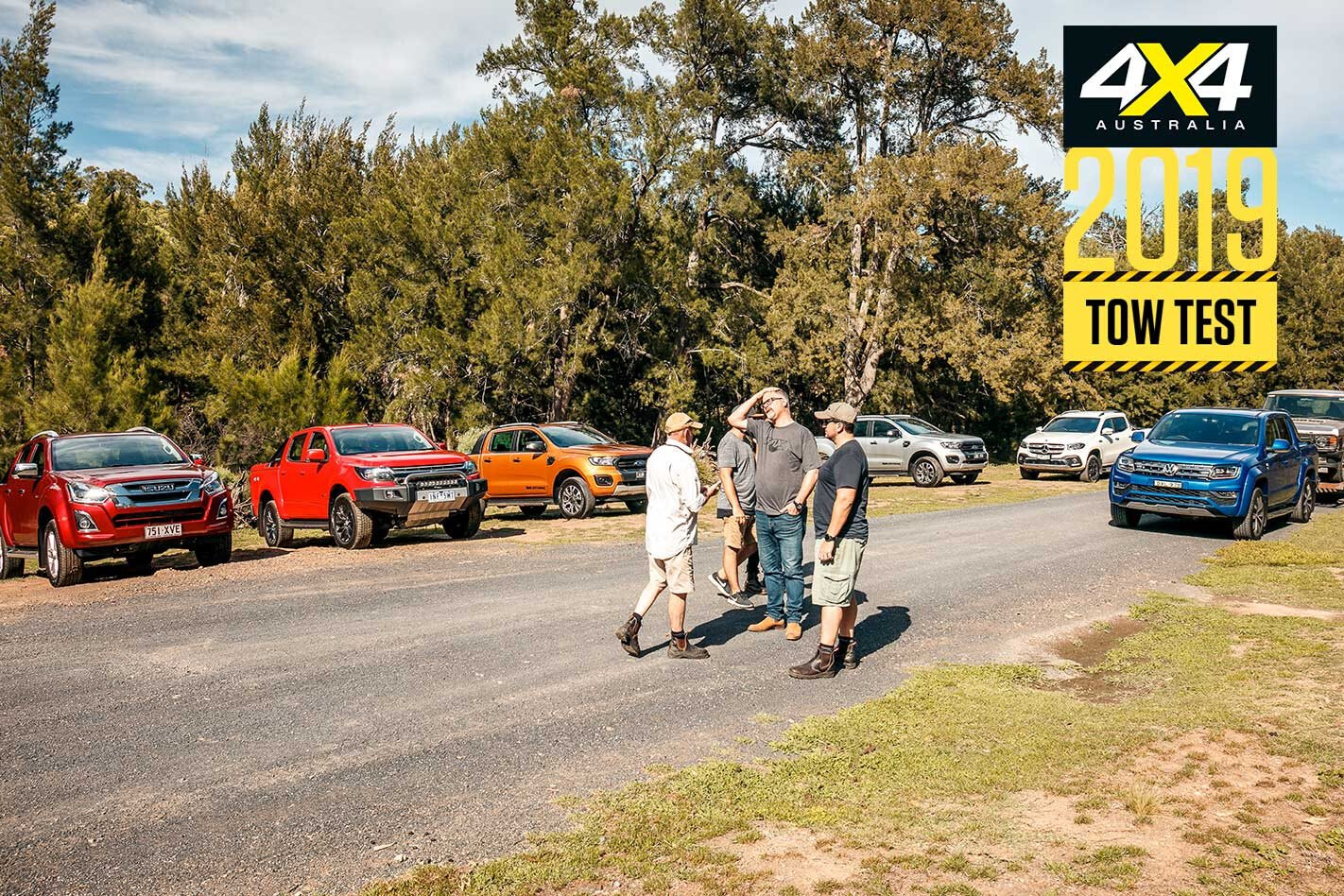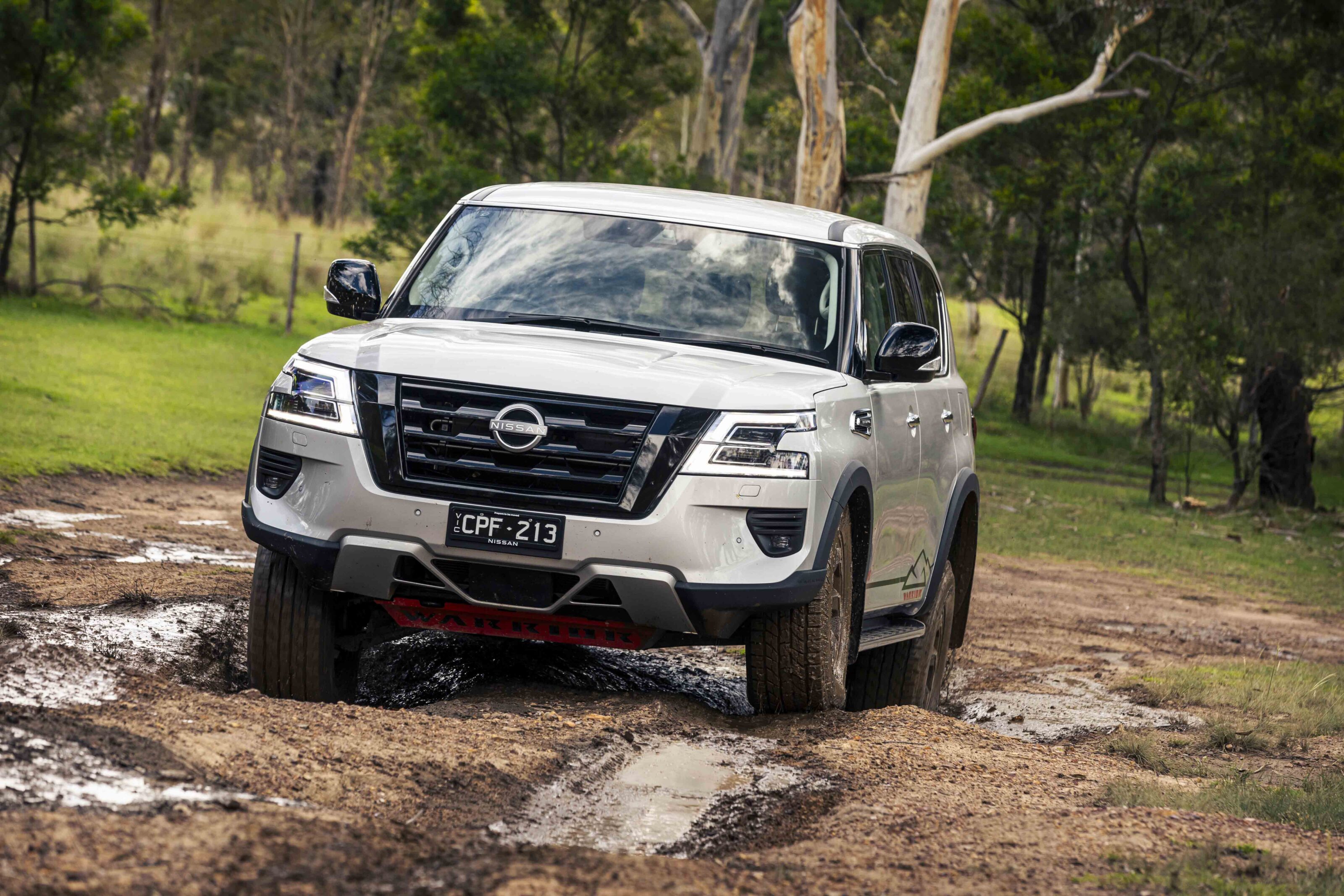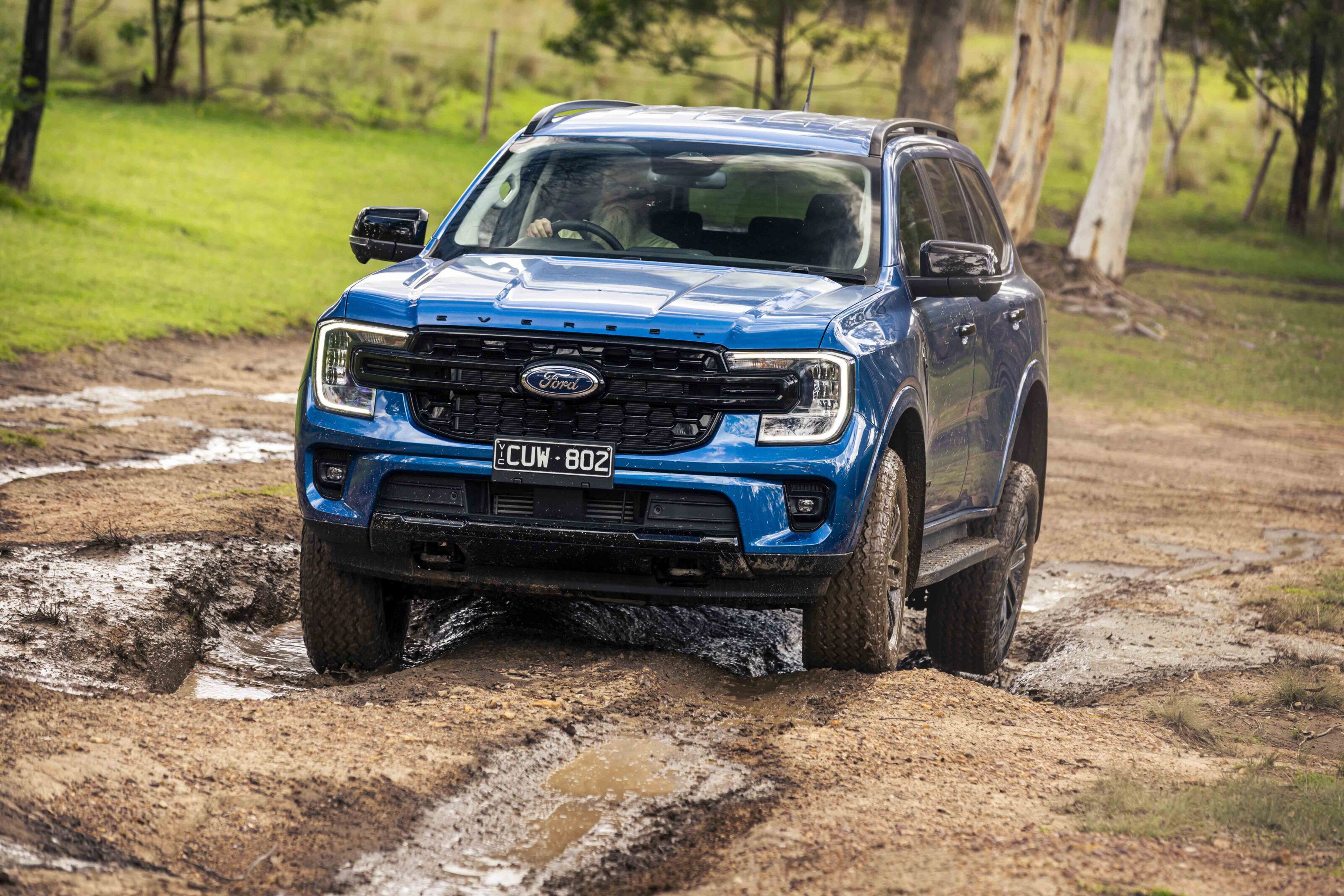RATING THE utes in the 2019 tow test in a one-to-six finishing order is difficult due to the big difference in price and the big difference in how the six performed in our load and tow testing. What’s fairly easy, however, is to slot them in three groups: outright winners; those which are good bang-for-your-bucks work horses; and those that aren’t well-suited to hard yakka.
In the winners group, but in no particular order, are the Amarok 580 and the Ranger 3.2. The 580 is a winner thanks to its muscular powertrain, clearly the most potent here. It backs that with a stable and competent chassis that’s as good as any here, and it gets the added security and safety of full-time 4×4. But then there are the safety omissions: no rear cabin airbags and no AEB.
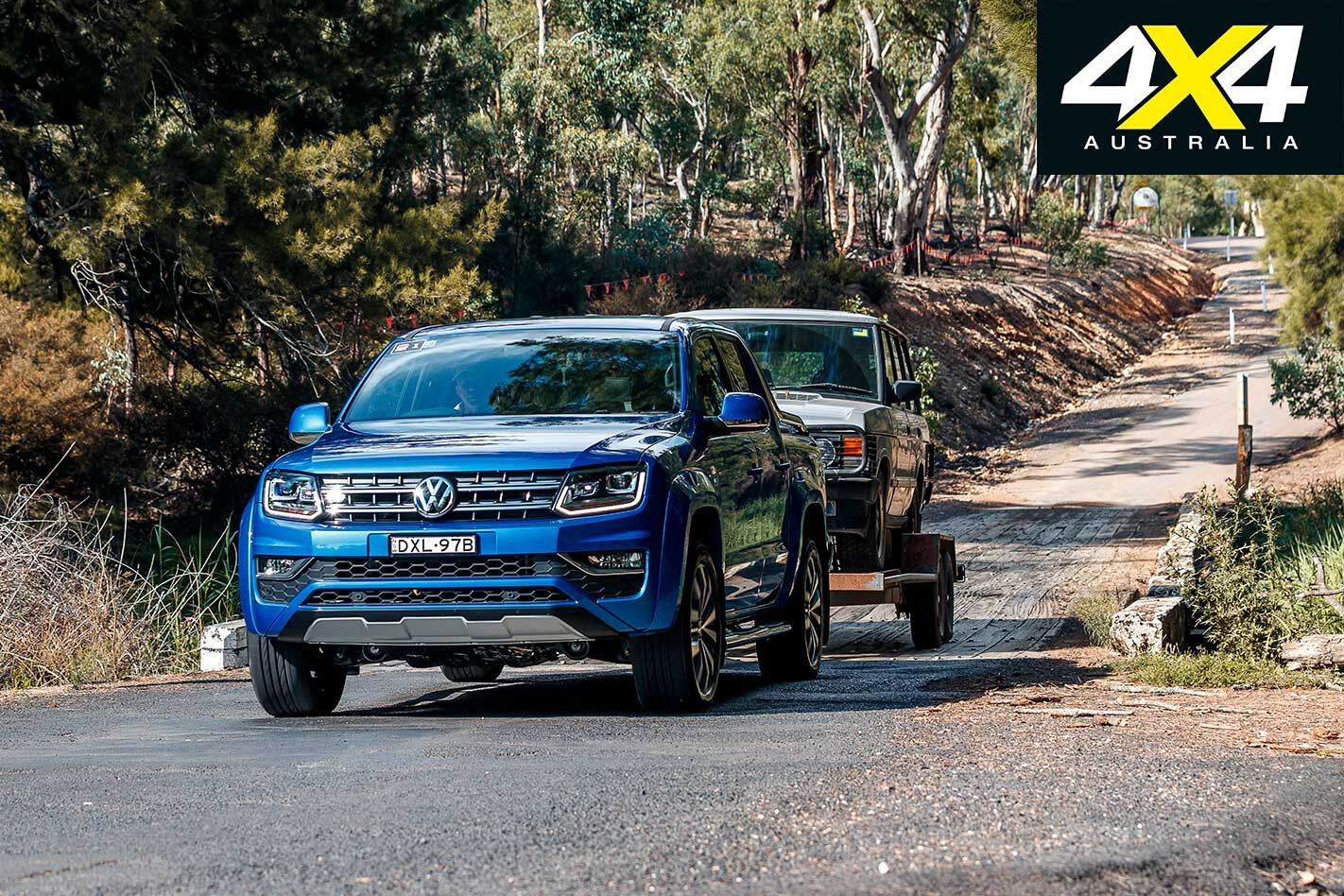
Plus, if you wish to tow a heavy camper trailer in the High Country, its lack of a two-speed transfer case may be an issue – still, the Amarok is excellent off road, despite not having low range. The 580 also isn’t cheap, but that’s offset by the fact an Amarok 550 Core, which should do 90 per cent of what the 580 does performance-wise and 100 per cent of what it does chassis-wise, can be had for just $50,990 driveaway.
The Ranger 3.2 is also a winner thanks to its stable tow- and load-friendly chassis and torquey, relaxed, low-revving and endearing five-cylinder engine. It’s the largest capacity engine here, which helps when there’s hard work to be done.
The 2019 revisions – the extra convenience and safety kit – make it a better package than it was before, and it’s always been very good in every role you could ask of it, load hauling included.
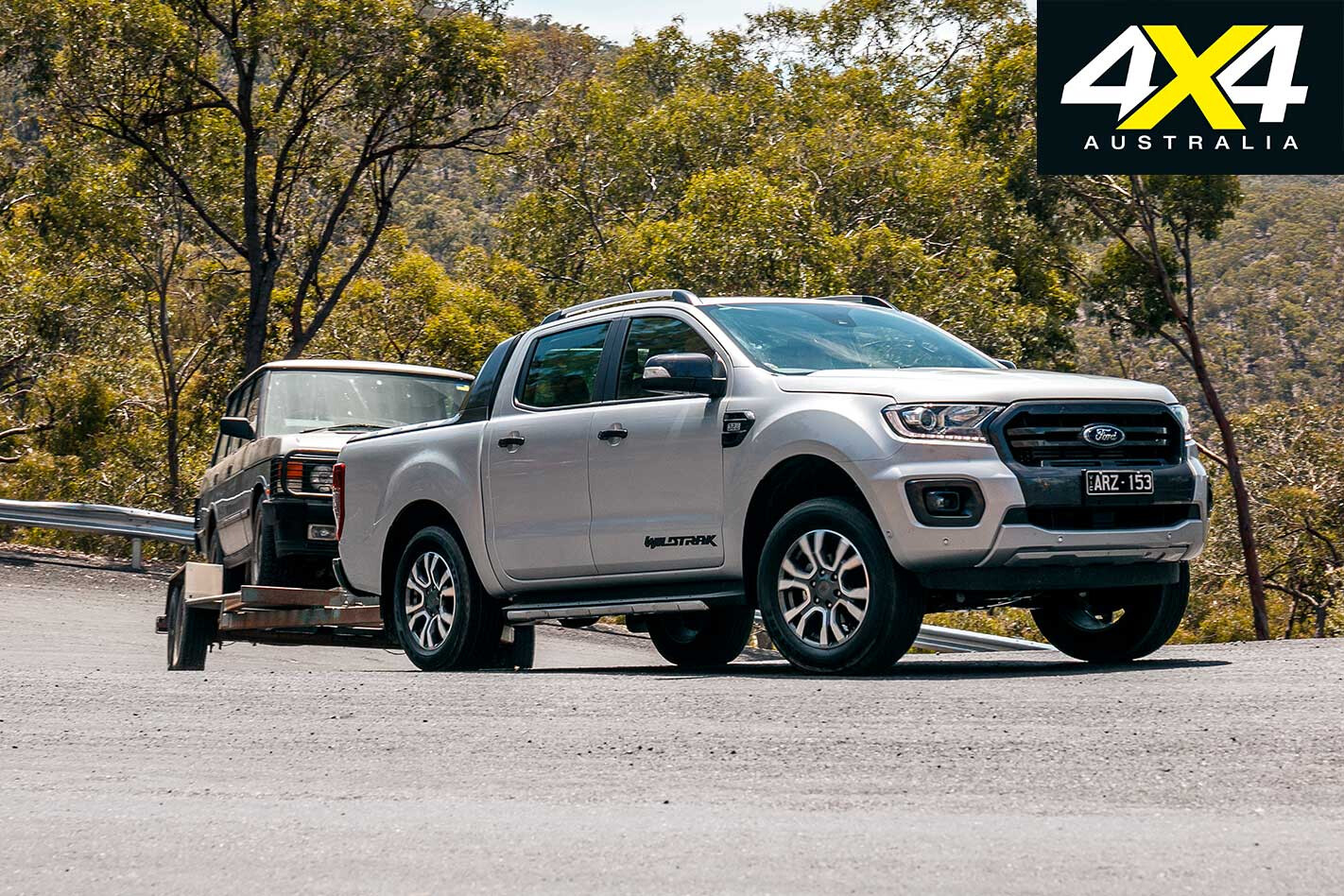
The Colorado and D-Max fall into the category of good bang-for-your-bucks load and tow rigs. On equipment parity, they are the two least expensive utes here: The D-Max, in the same mechanical spec as our test vehicle, starts at $46,600 (plus on-roads); while for $600 more you can get into a base-spec version of the Colorado we have here.
Both came through the test well. The Colorado has a bit more chassis finesse and more general towing power, while the D-Max relished the hard work of the steep climb and has the reputation of being the cheapest and easiest to service of all the popular dual cabs.
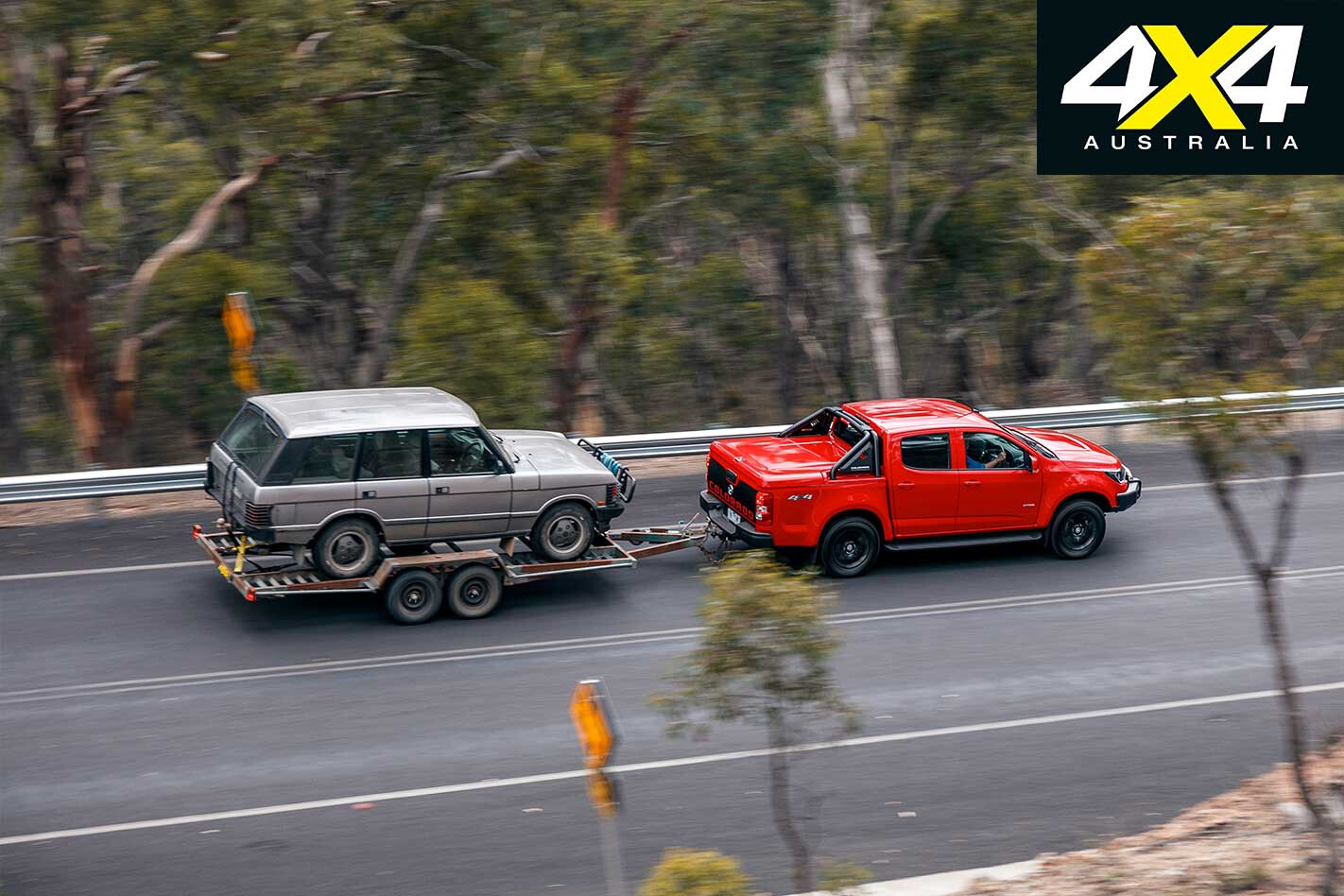
That leaves the Ford Ranger 2.0-litre and the Mercedes-Benz X350d, neither of which performed with distinction. As good as the Ranger’s new 2.0-litre bi-turbo engine is for general driving – where it outperforms the Ranger 3.2 – it wasn’t as fuss-fee in its general load-and-tow ability and dropped in a hole hauling the test load up the steep incline.
Its ‘little’ engine has to work harder than a big engine to do the same job and, while that harder work involves higher engine revs, it also means higher effective cylinder pressures. At least it has a good chassis for load and tow duties.

For the most expensive vehicle here by a good margin, the X350d’s chassis – in terms of its stability and the ease and confidence in which it carried and towed the load – was disappointing. In this regard it was the poorest performer; although, some recognition goes to the safety and convenience benefit of its full-time 4×4 system. And while the engine generally lived up to its promise of extra performance, it still couldn’t match the Amarok 580 when push came to shove. It should have been more of a close match, but it wasn’t.
Omissions from the 2019 Tow Test

IDEALLY, we would have liked to have had a Toyota Hilux along as well, but Toyota Australia was unable to supply a Hilux with an electric-brake controller. We also couldn’t get hold of a new Mitsubishi Triton in time.

